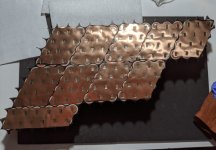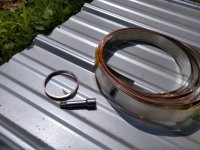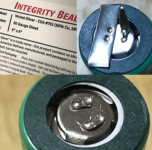spinningmagnets
100 TW
A quick reminder for the casual readers, if the cost of the magnets is a concern, only the negative ends of the cells are extra sensitive to heat. Of course, if you like the magnet method, it works as well on the positive end as it does on the negative.
For the positive end, I think flattening the tip of a solid copper wire and soldering it with a 100W+ unit would work quite well (possibly fuse-wire?). Using a soldering iron with 100W (or more) means that the joint is accomplished in a very rapid manner, so heat does not penetrate deep into the cell.
Of course, for the positive end, spot-welding remains acceptable, since it can take much more heat than the negative end. For copper series bus-strips, the copper/nickel sandwich method is an interesting option.
For the positive end, I think flattening the tip of a solid copper wire and soldering it with a 100W+ unit would work quite well (possibly fuse-wire?). Using a soldering iron with 100W (or more) means that the joint is accomplished in a very rapid manner, so heat does not penetrate deep into the cell.
Of course, for the positive end, spot-welding remains acceptable, since it can take much more heat than the negative end. For copper series bus-strips, the copper/nickel sandwich method is an interesting option.





